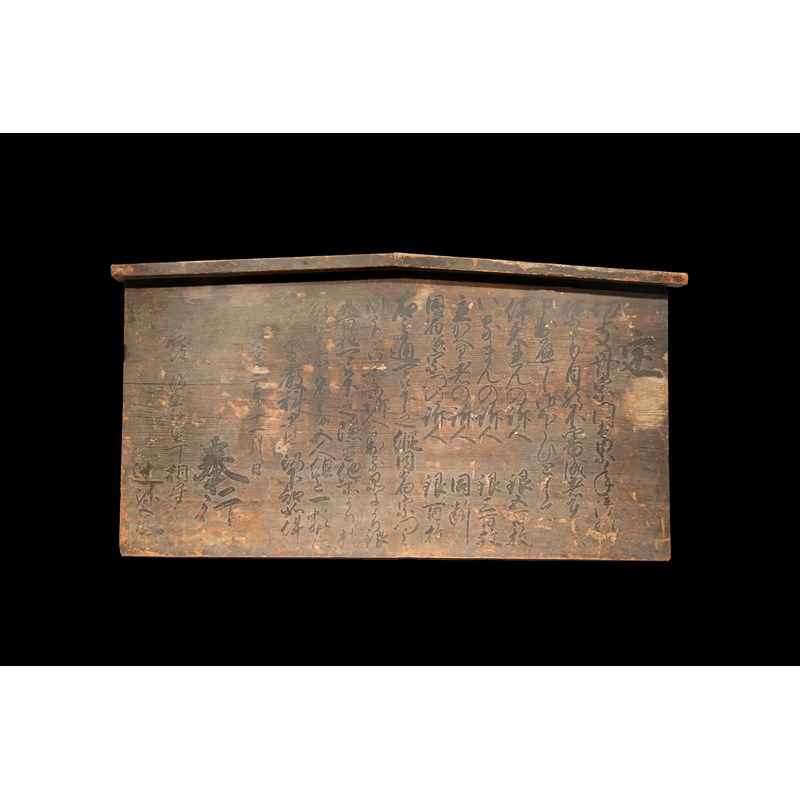Japanese Works of Art - 12 Nov 2019
A JAPANESE WOOD SIGN BOARD
A JAPANESE WOOD SIGN BOARD, KOSATSU
EDO PERIOD, DATED 1685
Of rectangular shape with a shallow-pitched roof, the wood left bare but for a long inscription in ink prohibiting the practice of Christianity and announcing rewards for the capture of Christians of various stature, with a signature for the Governor, Bugyo, and dated Jokyo ninen juichigatsu (November 1685), 47.3cm x 85.5cm.
See the British Museum, acc. n.1895,0721.1 for another notice board relating to the prohibition of Christianity dated 1682. Christianity was banned in the 1630s and these edict boards were visible all over Japan thereafter. Few of these survive, however, due to centuries of rain and wind damaging the wood.
Christianity first appeared in Japan in the 16th century with the arrival of Navarrese missionary Francis Xavier (1506-1552). It quickly reached the higher strata of society, with Daimyo families such as the Satsuma clan joining the faith, partly to have access to imported goods (such as guns) Portuguese Jesuits were trading in.
Christianity was fully banned from Japan by Tokugawa after the Shimabara rebellion of 1637-38 during which Christian peasants rebelled against the Shogunate. Other factors led to the ban, including the possible involvement of Portuguese Jesuits and suspicions that converts were spies for foreign powers.
The edict outlawed the promulgation of and adherence to the religion. It also marked the beginning of a long period of anti-Christian persecutions that lasted for two and a half centuries. Sign boards such as lot 266 where set up all over the country, encouraging people to report Christians to the authorities for various financial rewards (500 pieces of silver for a priest, or 100 for an ordinary convert).
Symbols and objects used for Christian worship were destroyed or desecrated. Lot 268 is an example of this iconoclasm, with the inscriptions to the sides of the incense burner erased to hide its original use. Christian practitioners who refused to renege their faith had to go into hiding and worship in secret. Figures of Kannon, the Buddhist Goddess of Mercy, and of Amida Buddha (lot 267) were adapted to resemble Christian iconography and become the central point of focus of hidden altars. Crosses and figures of Christ (lot 269) were hidden in ordinary objects such as this fake smoking pipe.
After the Meiji restoration and the re-establishment of religious freedom, more than 30,000 secret Christians came out of hiding in the 1870s.




 Live online bidding is available via our own
Live online bidding is available via our own